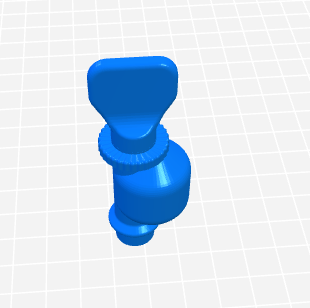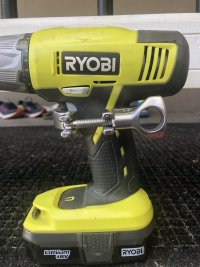Just getting into crushing my own grain and recently purchased a Crankandstein.
Found an old dusty table in the basement and it seemed to be just the right size to mount everything.
The drill is a harbor freight Bauer low speed drill/mixer (0-600 RPMs).
It conveniently had a place to screw a (3" approx.) 14 mm bolt so I could mount it upside down.
Then I used the template that came with the Crankandstein (to cut and drill holes) to mount the mill.
Crankandstein recommend running it around 200 RPMs. I have a zip tie on the trigger right now and just guessing at the speed.
Still trying figure out a more accurate way to count revolutions so I can run it at the optimal speed.
Cheers!

Found an old dusty table in the basement and it seemed to be just the right size to mount everything.
The drill is a harbor freight Bauer low speed drill/mixer (0-600 RPMs).
It conveniently had a place to screw a (3" approx.) 14 mm bolt so I could mount it upside down.
Then I used the template that came with the Crankandstein (to cut and drill holes) to mount the mill.
Crankandstein recommend running it around 200 RPMs. I have a zip tie on the trigger right now and just guessing at the speed.
Still trying figure out a more accurate way to count revolutions so I can run it at the optimal speed.
Cheers!
















































![Craft A Brew - Safale S-04 Dry Yeast - Fermentis - English Ale Dry Yeast - For English and American Ales and Hard Apple Ciders - Ingredients for Home Brewing - Beer Making Supplies - [1 Pack]](https://m.media-amazon.com/images/I/41fVGNh6JfL._SL500_.jpg)














